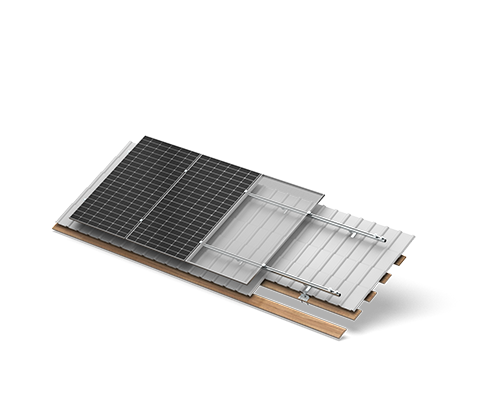Optimizing Solar Projects with Efficient Tile Roof Mounting
October 29, 2025
In order to successfully install solar panels on tile roofs, one must employ a technique that takes into account the structure of the roof while also guaranteeing a safe and economical installation. There is a clear correlation between the choice of a tile roof mounting system and the timeliness of the project, the amount of money spent on labor, and the long-term performance of the investment. Two of the most imporOptimizing Solar Projects with Efficient Tile Roof Mountingtant issues for businesses are adaptability to a wide variety of roof profiles and operational efficiency during the installation phase. A well-designed system satisfies both of these concerns. For project managers who want to keep costs under control and guarantee a solid output, these characteristics are the most important considerations.

Achieving Adaptability Across Various Roof Types
A significant hurdle in commercial solar is the absence of a universal tile standard. Facilities can feature clay, concrete, or slate tiles, each with distinct shapes, thicknesses, and installation methods. A rigid, one-size-fits-all mount can lead to complications, requiring custom modifications that increase time and expense. An effective tile roof mounting system overcomes this through versatility. This is typically achieved with a range of specialized hooks, each engineered to fit a specific tile profile. This approach allows installers to select the precise component that interfaces correctly with the existing roof without altering the tiles themselves. This adaptability ensures a secure fit and even weight distribution, which is fundamental for preserving the roof's integrity and providing a stable base for the panels.
The Impact of Design on Installation Efficiency
Beyond physical compatibility, the ease of assembly is a major factor in the total cost of a solar project. Systems that require extensive on-site fabrication or complex adjustments can slow down crews and increase labor hours. A tile roof mounting system designed with pre-assembly in mind offers a distinct advantage. Utilizing highly pre-assembled parts, such as modular clamps and pre-configured rails, significantly reduces the time and effort needed for setup. This streamlined process simplifies the installation, minimizes the potential for errors, and directly contributes to lowering overall labor costs. This efficiency allows projects to be completed faster, reducing the disruption to business operations and improving the return on investment.
The methodology behind mounting solar on tile roofs has evolved to meet clear commercial needs for flexibility and economy. A modern tile roof mounting system should provide a comprehensive solution that accommodates architectural diversity while simplifying the construction process. At Antaisolar, we develop our products with these principles in mind, focusing on versatile hooks and pre-assembled components that support efficient project execution. The goal is to provide a reliable foundation that integrates seamlessly with the existing structure, enabling a straightforward path to solar energy adoption.

Achieving Adaptability Across Various Roof Types
A significant hurdle in commercial solar is the absence of a universal tile standard. Facilities can feature clay, concrete, or slate tiles, each with distinct shapes, thicknesses, and installation methods. A rigid, one-size-fits-all mount can lead to complications, requiring custom modifications that increase time and expense. An effective tile roof mounting system overcomes this through versatility. This is typically achieved with a range of specialized hooks, each engineered to fit a specific tile profile. This approach allows installers to select the precise component that interfaces correctly with the existing roof without altering the tiles themselves. This adaptability ensures a secure fit and even weight distribution, which is fundamental for preserving the roof's integrity and providing a stable base for the panels.
The Impact of Design on Installation Efficiency
Beyond physical compatibility, the ease of assembly is a major factor in the total cost of a solar project. Systems that require extensive on-site fabrication or complex adjustments can slow down crews and increase labor hours. A tile roof mounting system designed with pre-assembly in mind offers a distinct advantage. Utilizing highly pre-assembled parts, such as modular clamps and pre-configured rails, significantly reduces the time and effort needed for setup. This streamlined process simplifies the installation, minimizes the potential for errors, and directly contributes to lowering overall labor costs. This efficiency allows projects to be completed faster, reducing the disruption to business operations and improving the return on investment.
The methodology behind mounting solar on tile roofs has evolved to meet clear commercial needs for flexibility and economy. A modern tile roof mounting system should provide a comprehensive solution that accommodates architectural diversity while simplifying the construction process. At Antaisolar, we develop our products with these principles in mind, focusing on versatile hooks and pre-assembled components that support efficient project execution. The goal is to provide a reliable foundation that integrates seamlessly with the existing structure, enabling a straightforward path to solar energy adoption.
end
